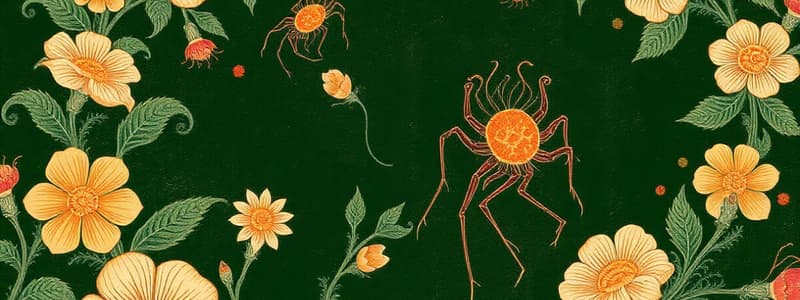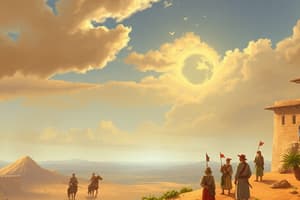Podcast
Questions and Answers
Match the term to its description, based on the images provided:
Match the term to its description, based on the images provided:
Colonial Organism = A group of identical cells living together. Multicellular Organism = An organism composed of different cells that perform different functions. Unicellular organism = An organism that consists of only one cell . Filopodia = Slender cytoplasmic projections that extend beyond the leading edge of migrating cells.
Match the structures with their potential functions in the pictured single-celled organism:
Match the structures with their potential functions in the pictured single-celled organism:
Flagellum = Motility Cell membrane = Regulates the transport of materials into and out of the cell. Cytoplasm = A gel-like substance holding the cellular organelles. Ribosomes = Synthesizes proteins.
Match each cellular structure with its most accurate description:
Match each cellular structure with its most accurate description:
Cell Wall = Provides rigidity and protection to the cell. Cell Membrane = A selectively permeable barrier that regulates the passage of substances. Nucleus = The control center of the cell, containing the genetic material. Mitochondria = The powerhouse of the cell, responsible for energy production via cellular respiration.
Which type of reproduction best describes the process by which the colony multiplies, assuming each cell is capable of independent division?
Which type of reproduction best describes the process by which the colony multiplies, assuming each cell is capable of independent division?
Match the term with the description that best fits how these organisms might interact with their ecological environment:
Match the term with the description that best fits how these organisms might interact with their ecological environment:
Flashcards
What is a unicellular organism?
What is a unicellular organism?
A single-celled organism with an oval shape, a fringe-like structure at the top, and a long, wavy line extending from it.
What is a cellular cluster?
What is a cellular cluster?
A group of cells, each similar to the single-celled organism, clustered together with long, curved lines attached.
What is a fringe-like structure?
What is a fringe-like structure?
The fine, vertical lines at the top of the single-celled organism.
What is a wavy line?
What is a wavy line?
Signup and view all the flashcards
What is an organism?
What is an organism?
Signup and view all the flashcards
Study Notes
- Solitary and colonial forms of organisms are depicted.
- The solitary type is characterized by a stalk.
- The colonial type has organisms grouped together.
- Both types of the organisms have cilia.
Studying That Suits You
Use AI to generate personalized quizzes and flashcards to suit your learning preferences.




